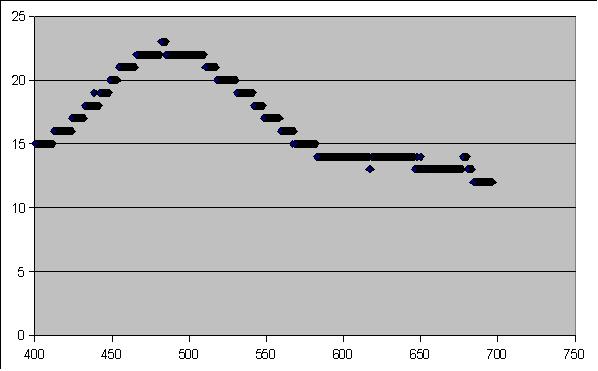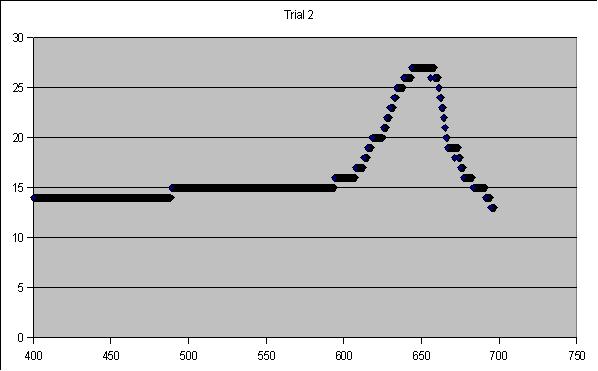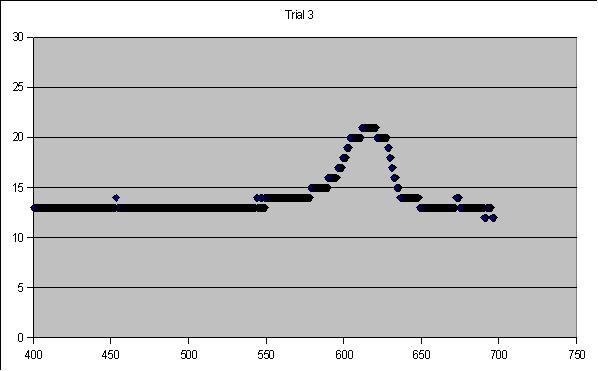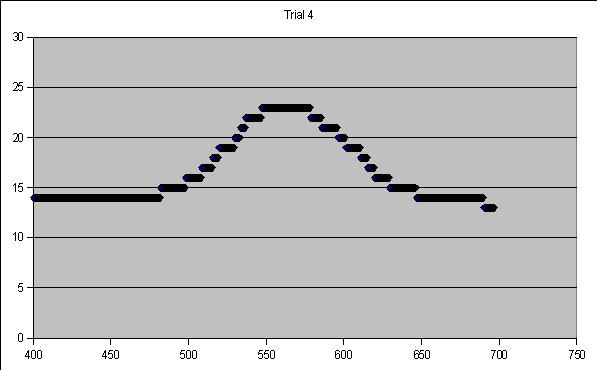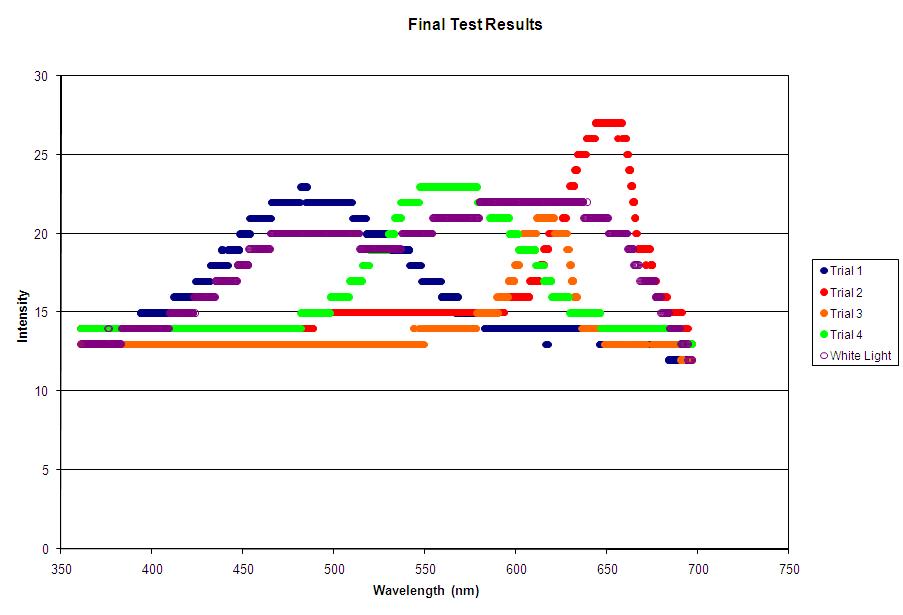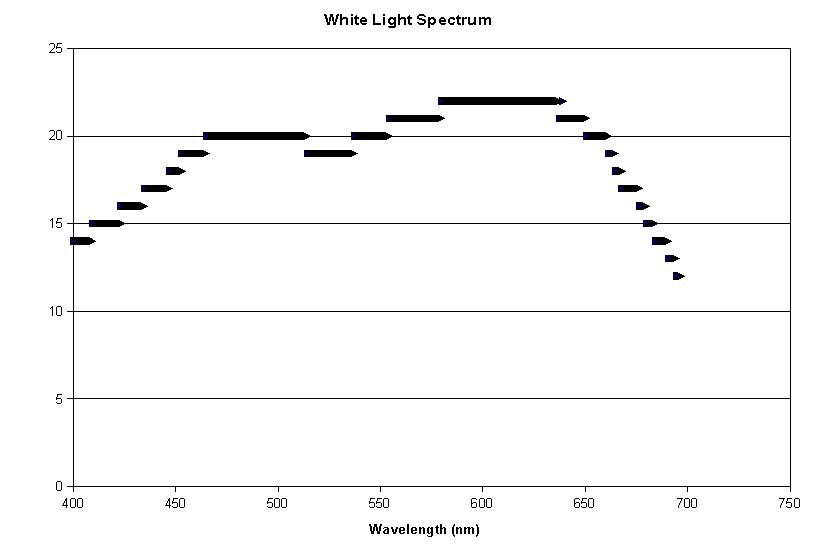Trace: » demonstration_and_results
This is an old revision of the document!
For the final demonstration four optical sources were selected: a red LED, a yellow LED, a green LED, and a blue LED. The sources were inserted to be analyzed randomly. The program Hyperterminal was set to record and the spectrometer was turned on. The stepper motor rotated the bolt which translated the photodiode across the spectrum. The PIC microcontroller received the analog readings from the photodiode and converted them into a digital value. This value was transmitted via the RS232 connection in ASCII format to the computer. The Hyperterminal console monitored the output and recorded the results on a text pad. The process took approximately 6 minutes. This was repeated for the other three LEDs at random.
The output data on the text pad was plotted graphically. The graphs are presented in the random order they were chosen during the demonstration. The horizontal axis is wavelength (in nanometers) and the vertical axis is intensity (in [V/255 * 5] volts).
The spectrometer performed according to expectations and the resulting plots were reasonable. The first trial produced a graph with a short wavelength, with a mean peak of 481 nm. The second trial produced a longer wavelength with a mean peak of 650 nm. The third was longer than the second with a mean peak of 615 nm. The fourth was longer than the third with a mean peak of 561 nm. From these results it may be deduced that the first trial was for the blue LED, the second was for the red LED, the third was the yellow LED, and the fourth was the green LED.
To observe the relative position of each LED in the spectrum, the following graph presented summarizing the results:
After the demonstration a white light source was analyzed using the spectrometer. The result was the spectrum covered the entire range of the four single-coloured LEDs. There are two peaks on the spectrum, corresponding to separate optical mixtures in the source used to approximate white light.
The results of our spectrometer were compared to those of the LED specification sheets. The blue corresponded to a mean peak of 464 nm (-17 nm deviation), the red corresponded to 645 nm (-5 nm deviation), the yellow to 591 nm (-24 nm), and the green to 515 nm (-46 nm). This deviation was due the diffracted light arriving at the photodiode from different angles. This results in a wavelength distribution that is nonlinear across the spectrum.
You are here: start » group2 » demonstration_and_results
